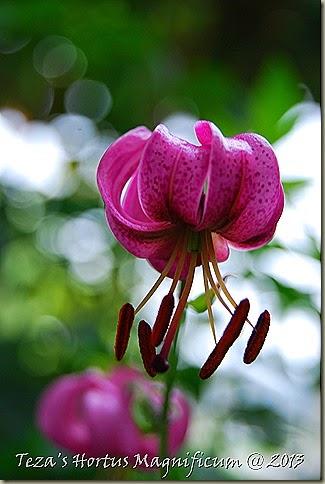
Thus far we know that Helleborus represents a durable and beautiful garden plant that are relatively long lived, with a floriferous bloom period, sometimes extending past the two month mark!
Most are adaptable to sun or shade in the garden, preferring sun in the earlier months when it is less direct and harmful. The majority of plants are relatively drought established once established, but moisture is required during the flowering months! Most are endemic to open woodlands [oak and beech being most common in their native haunts] and rocky mountainsides.
In the garden most perform admirably under deciduous trees, allowing for more sun during the Winter and Spring, with a beneficial canopy of leaves as summer’s hot and humid weather builds. Flowering stems bear leafy, photosynthetic bracts to help fuel growth and replenish reserves that have been depleted by flowering before new fresh foliage appears. Several species are fully deciduous in winter with the exception of H. vesicarius [L] and H. thibetanus [R], the latter which is fully deciduous and dormant by June, and the former which remains dormant throughout the summer before initializing growth and flowers in the Fall. While both are considered the enfants terrible within the genus, they remain the most talked and gossiped about. H. thibetanus resides in my garden, while H. vesicarius remains frustratingly elusive!
In the garden Helleborus demand consistent moisture during the flowering and hardening periods. They respond best to humus, rich, somewhat chalky soil, remembering that most are endemic to limestone mountainous areas throughout Europe. Reports state that an ideal pH falls between 6-7. Most plants are most floriferous during their third year, which seems to coincide with the age of most plants sold in reputable garden nurseries. Younger plants will bloom sporadically until they are mature enough. When happy, they are quick to establish themselves and expand into glorious clumps!
 HARDINESS poses somewhat of an issue for collector gardener’s like myself – always falling haplessly in love with the least hardy, tenderest of all, as seen at left with Helleborus lividis ‘Pink Marble’ which even in Zone 7 requires protection from temperatures below ten degrees!
HARDINESS poses somewhat of an issue for collector gardener’s like myself – always falling haplessly in love with the least hardy, tenderest of all, as seen at left with Helleborus lividis ‘Pink Marble’ which even in Zone 7 requires protection from temperatures below ten degrees!
The majority of the acaulescent species are hardy to Zone 4 [-20 to –30 Fahrenheit] Of course H. thibetanus and H. vesicarius are the noted exceptions to the rule, hardy between Zone 6-8 at best! ] Caulescent species, the ‘tenderhearted’ within the genus have hardiness factors that typically range between Zone 6-9! A noted exception is the strikingly beautiful H. foetidus which remains evergreen throughout my Zone 5 winters with a wee bit of compost and mulch. Flowers seem somewhat indifferent to freezing, usually snapping back with the next melt.
Sadly, one must mention that Hellebores are not the indomitable, infallible plants one hundred percent of the time. Coniothyrium hellebori represents an organism that is most frequently the causal factor for plants developing black spot. Botrytis cinerea, as well as root and crown rot hastened by the presence of Rhizoctomia, Pythium, Phytophthora, Cylindrocladium and Fusarium, are the main pestilence that effect the growth and survival of Helleborus. Compost tea, fungicides and adequate air circulation will all help in maintaining happy, healthy plants.
And now, for a few of my personal favourites as well as some new and exciting introductions:
Oh, seems I need to save them for HELLEBORGANZA: Let the Parade Begin! [Part Three in the Series!]



































No comments:
Post a Comment